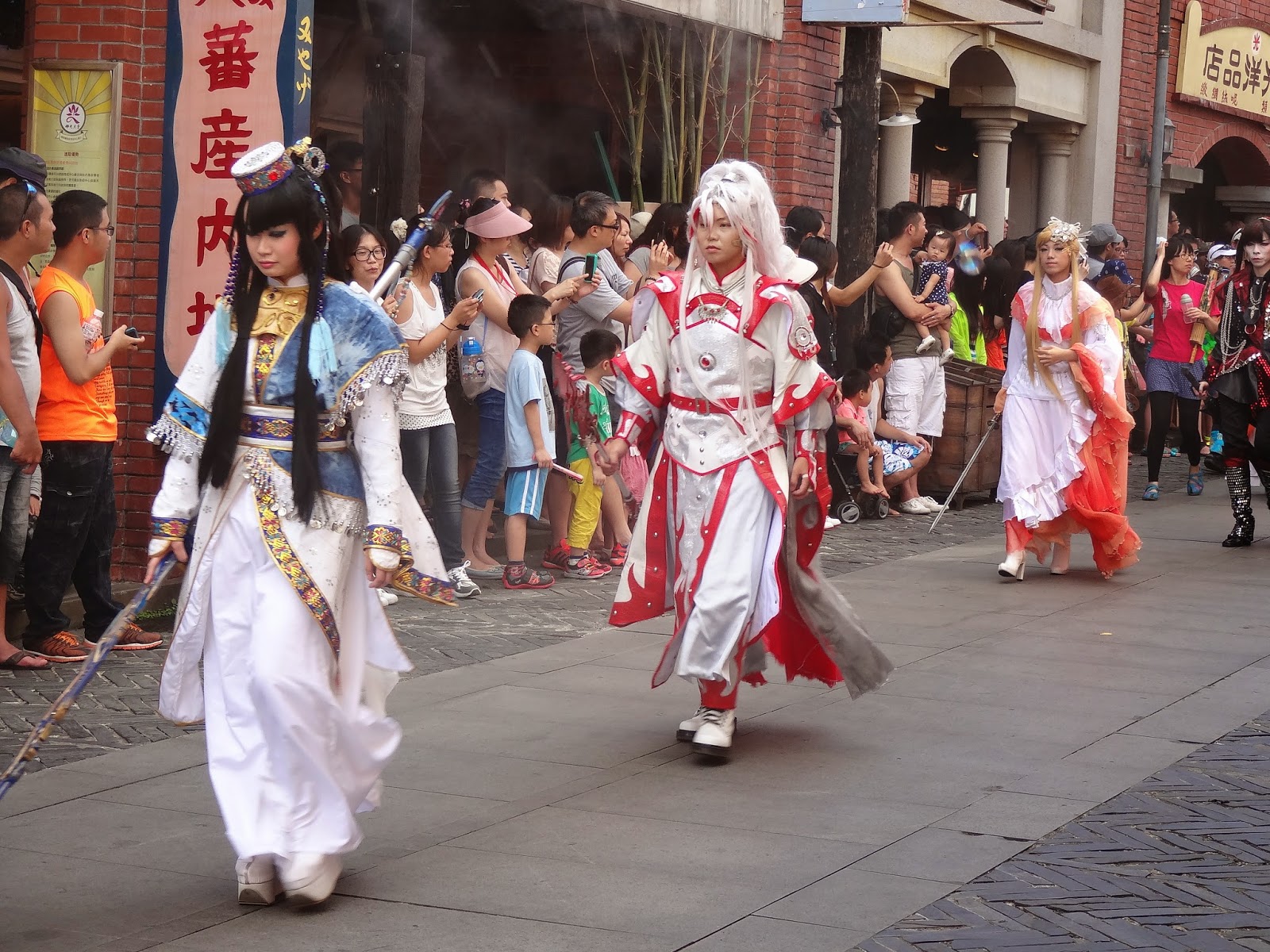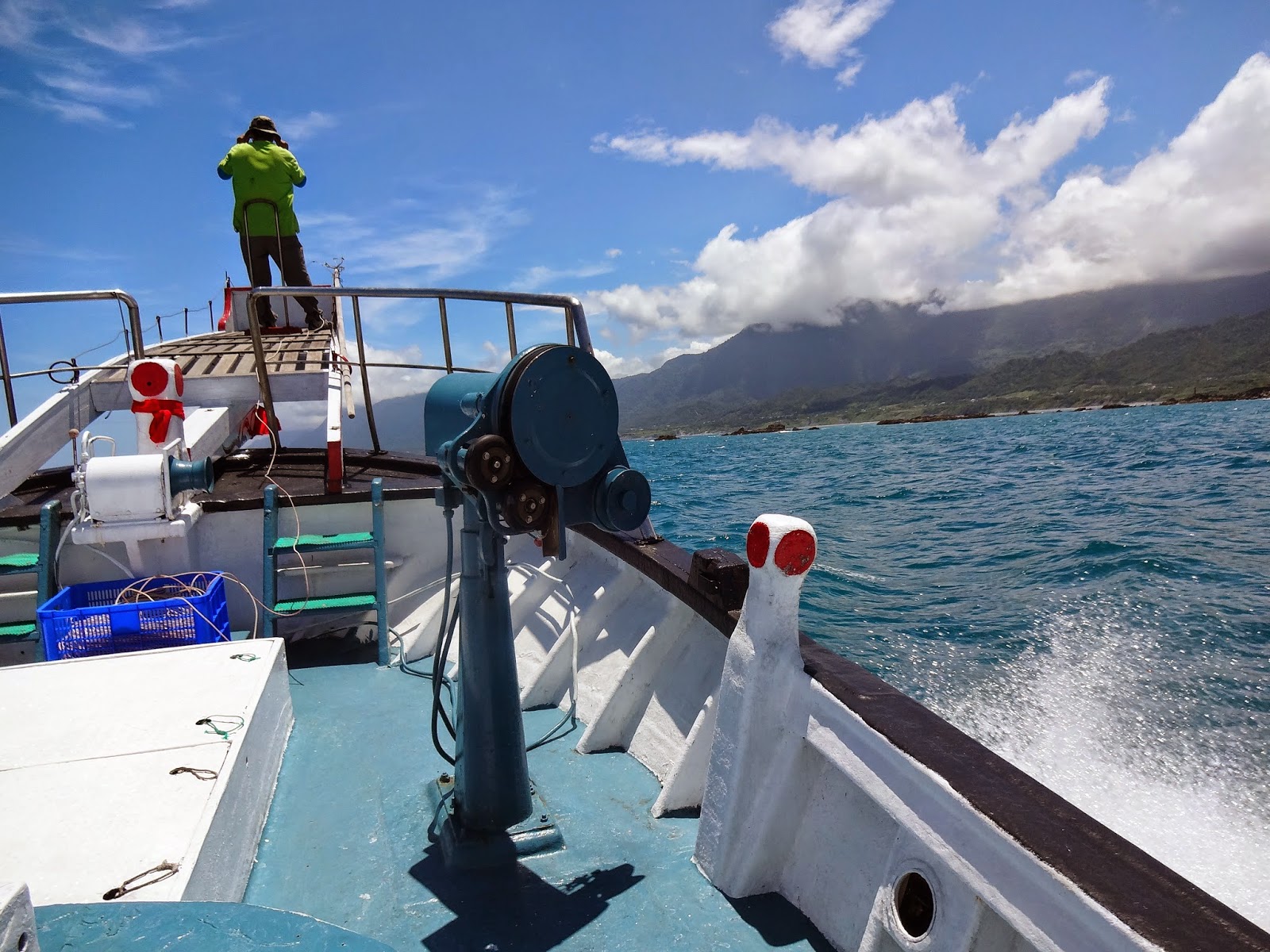I certainly can’t say I’ve been too busy with work these
past few weeks. Ever since my
replacement started taking over some of my classes, I have watched the gaps in
my schedule grow. Late starts, early
finishes, big breaks in the middle of my day, it is a strange pattern for a
workaholic. Still, I will admit that the
extra time has been nice for travel purposes.
Speaking of travel, last weekend I found myself out on the
east coast of Taiwan again, this time in Yilan county (to the north of the
island). After another all-nighter
singing karaoke, I found myself on a catching my night’s sleep on a train. It is times like these that I am thankful to
still be young, because I know, short bursts of sleep on the floor of a train
between stops (I was in a doorway and had to stand at each station) is not a
proper way to get through the night. My
friend, who was possibly wiser than me, caught a few hours of sleep, jumped on
the High Speed Rail, and caught up to me only a couple hours after I
arrived.
When I arrived at my destination, Luodong, I went straight
to the National Center for Traditional Arts.
As the title suggests, this is a living “museum” area, where vendors can
showcase not only their completed ‘artwork’, but the process by which it is
made as well. Artwork is a broad term in
this case, it can be used to describe anything from hand-painted parasols, to
pottery, to soap, to sugar-glazed fruits.
The variety of goods lining the streets was pretty impressive. My disclaimer for the center is that, many of
the items for sale could be found in markets or along the old streets of
countless cities around Taiwan, making you question why an entrance fee ($150NT
I believe).
The center appears to be a great place for children, and
school field trips. A large number of
the stores provided a DIY (do-it-yourself) craft, and I can picture parents and
children enjoying attempting to complete all of the projects. For as much as I enjoy that kind of thing,
weighing my bags down with hand-made knick-knacks seemed like a poor choice, so
I stuck to window shopping instead. As I
was nearing the end of the street, an announcer dressed in a Cosplay outfit
caught my eye. She was directing people
off of the road and onto the sidewalks, and my confusion only lasted a few
seconds before the Japanese music had filled the streets and several more
costumed-people were marching towards me.
I feel like, if my Chinese was stronger, I could have expected this
show, but it isn’t, so I didn’t. Instead
I followed blindly like a sheep as people help up their cameras to record the
fake fights, and it wasn’t until a few minutes later that I remembered…I don’t
care about any of this, so I walked away.
It was interesting to see the costumes and the choreography, but trying
to follow the plot was impossible, and the crowds made it very hard to
see.
 |
| Some of the actors from the Cosplay show. |
The main thing that surprised me about the center, although
I should come to expect these things, was the assortment of stores at the back
of the shopping street. Starbucks, 7-11,
there was even a locker of phone charging stations. I can’t complain though, by
that point I was so hungry, I appreciated the selection.
Mid-afternoon I made my way back to the train station to
pick up my friend, then we rented a scooter and began our less-than-easy
adventure to find the hostel. We
carefully read the maps, and got lost.
Then we followed the hostel’s written directions, and got lost. Finally we just called the desk and they came
to track us down in a van. I have never
seen such a well-hidden building before, truly impressive.
Unburdened by out bags, we went into town, and almost as if
I have a homing mechanism on them, I immediately found the night market. I know they are common, but I am often
impressed at how many markets I manage to find (especially because not all
markets are open daily). The Luodong
Tourist Night Market forms a good-sized square around Zhongshan park which (at
least while we were there) hosts entertainment and art. There were a few stages, with performers
showing of singing, dancing, and instrumentals, and along the footpath from
them were themed lantern displays. The
area was very nice to walk through at night.
Uncomfortably stuffed (from pizza, we weren’t in the mood
for street food), we went back to the hostel, and wasted no time getting to bed
(all-nighters leave you quite tired the following night).
The next morning, we traveled south a little ways to the
port of Nanfang’Ao. Despite its
reasonably small size, Nanfang’Ao is one of the busiest fishing towns in
Taiwan, housing more than 800 boats. The
streets lining the water’s edge are filled with countless stores, market stalls
and restaurants. In one of the fresh
fish markets we watched a boat unloading buckets of shrimp from its latest
catch, undoubtedly on their way to an afternoon auction. Inside, vendors were selling all cuts of
fish, and many stalls were providing sashimi free samples (uncooked fish, as
delicious as it may be, is still a strange food to take samples of in a market,
however).
 |
| Hundreds of boats, tied to each other in Nanfang'Ao. |
Ready to move on, we jumped back on a train and went north
to the mountain cities of Jiufen and Jinguashi.
Long ago, Jiufen was the center of gold mining in Taiwan, attracting
miners from around Asia, but since the decline of mining, the city’s popularity
has decreased. It is now best known for
its role in the film “City of Sadness” (and since I am not a movie person, I
know nothing about it). The main
attraction of Jiufen is the old street, which winds throughout most of the town
and spends almost every weekend packed with shoppers.
 |
| The stunning view from Jiufen. |
 |
| The crowded shops of the Jiufen Old Street. |
If you wander past the shopping district, and
into Jinguashi, you are rewarded with views of the Golden Waterfall, which is
so easy to find that it literally runs under the road for parts of the
journey. The waterfall was so named
because of the color of the rocks and the water that flow over them. The water has picked up deposits of copper
and iron from the nearby mines, tinting it a light brown color.
 |
| One of the sections of the Golden Waterfall. |
Even further along the road, as you descend the mountain and
near the Pacific Ocean, is a sight I first witnessed over a year ago on my road
trip around Taiwan. What is now set of
ruins which seem to stretch over the entire side of the mountain used to be the
Shuinadong Smelter, a ore and smelting plant for the Taiwan Metals Mining
Corporation. Looking up at the 13
stories of the plant, I was desperately trying to see a sign that we could
enter the facilities, but it appeared to be pretty abandoned (to the relief of
my travel companion).
 |
| The 13-Story ruins of Shuinadong Smelter. |
Exhausted, it was time to call it a day, but as we approached
the bus stop and saw the hoards of people waiting, we agreed to splurge and
hire a taxi. We approached the queue and
were told by the driver that the cost would be $500 NT per person, and I bit my
tongue and quietly agreed (though I was mentally fuming because of how
overpriced that was). I was even angrier
when we were placed into a taxi with two other girls…overpriced and lacking the
luxury of our own space, unreasonable.
Then we got to the bottom of the hill and passed the train station, and
I couldn’t believe he would waste our time by not going directly to the
destination. I worked up all my
arguments in my head, and even figured out how to say the bulk of them in
Chinese, by the time we boarded the expressway.
The expressway? Why is that part of the journey into town…OH! It clicked
in my head at the same time that it clicked for my friend, we weren’t going
back to Ruifang, we were going to Taipei! My anger was completely gone, our
trip just got significantly easier, our timing actually worked out, we even had
time to grab dinner before the bus ride back to Changhua. Just perfect.
These weekend trips have completely worn me out, but every
adventure has been worth the lost sleep.
How strange to know, there will only be a few more weekends like this.



















